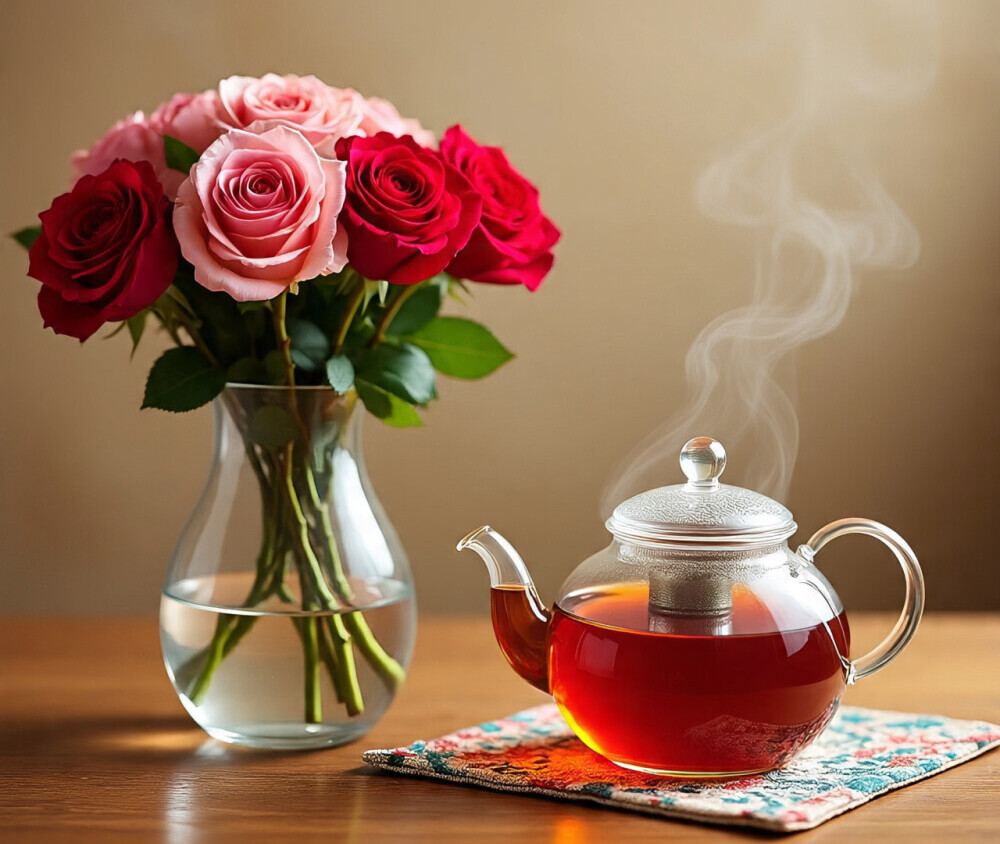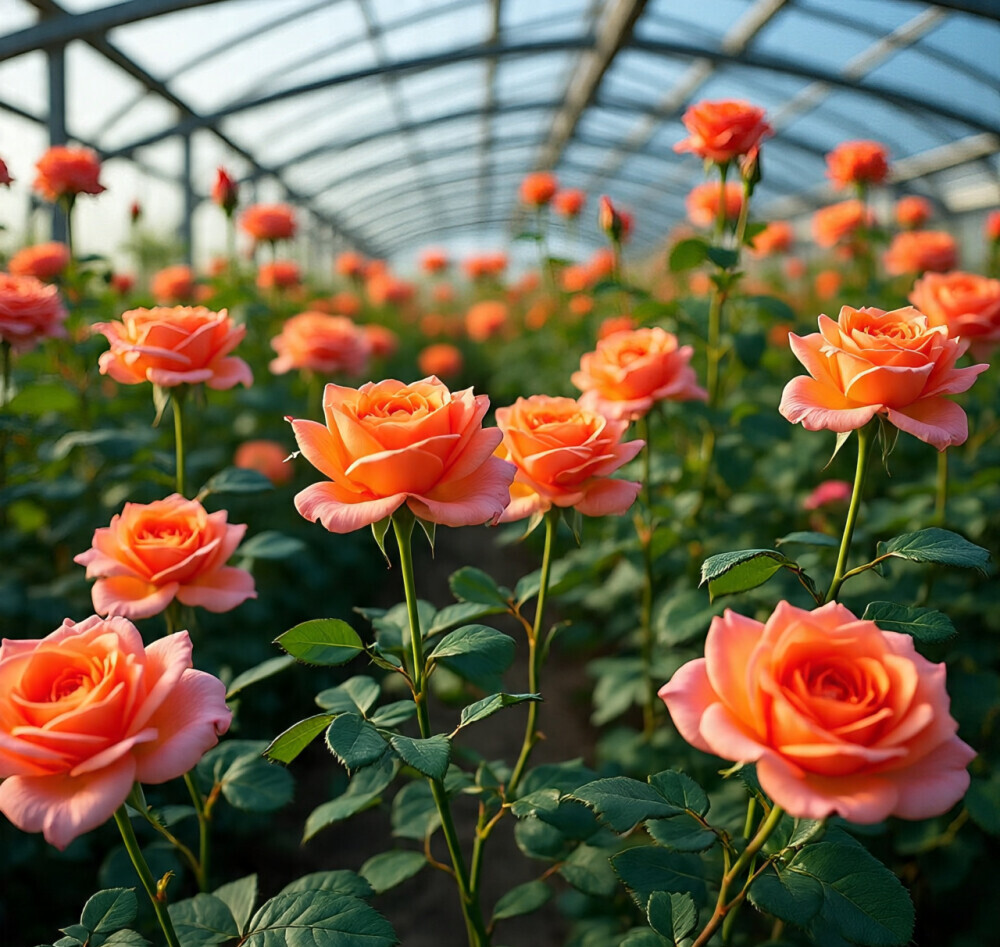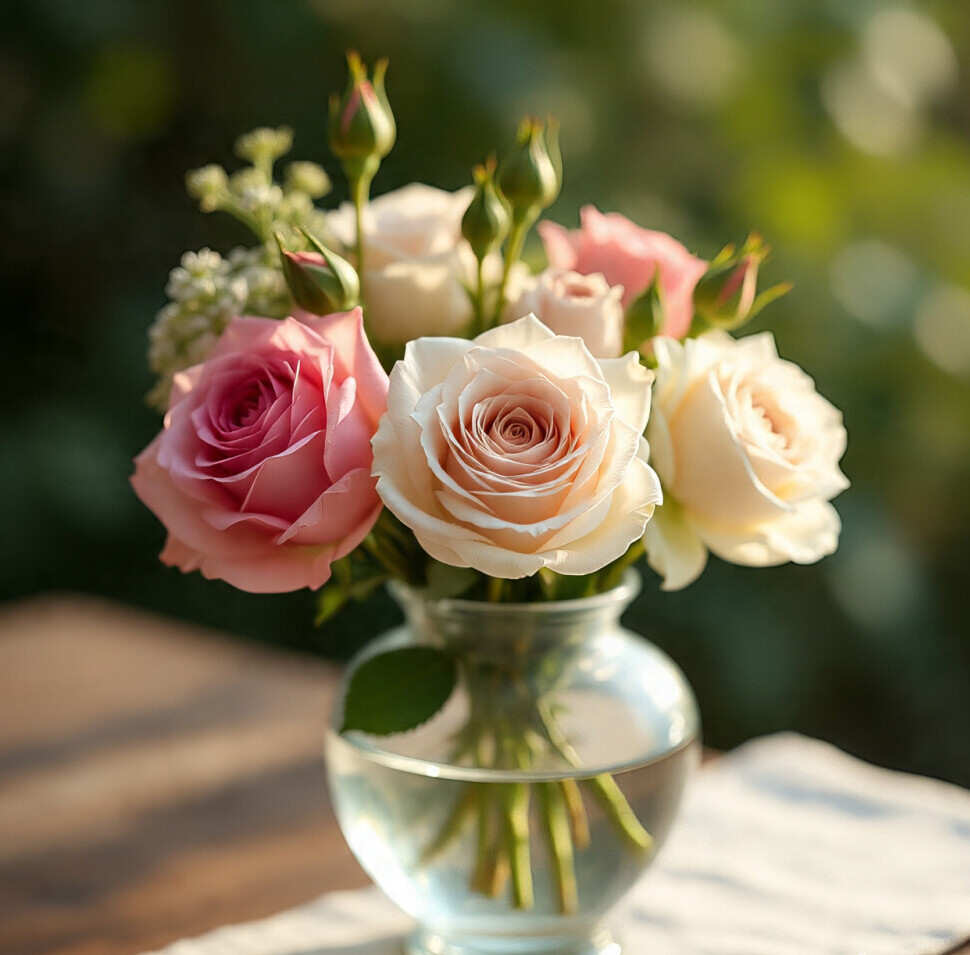Some roses don’t need to shout for attention.
Their fragrance isn’t loud or sugary; it’s soft and refined, like the scent of fresh tea leaves swirling gently on a morning breeze.
Tea scented roses bring an air of timeless elegance to any garden or bouquet, and I find their subtle perfume really adds a special depth to even the most classic rose display.
In this guide, I’ll walk you through what makes these roses so unique, explain their background, share the best kinds to grow, and give tips for getting that perfect tea aroma in your own backyard.
There’s so much to love about these classic beauties, and by learning about them, you can truly add a unique touch to your garden—and connect with a piece of rose history.

What Are Tea Scented Roses?
Tea scented roses trace their roots to a beautiful meeting of species from China: Rosa chinensis and Rosa gigantea.
Early in the 1800s, gardeners and plant collectors in Europe started trading for these new arrivals, falling in love with their sophisticated scent.
This was a real switch up from the heady, spicy old damask roses of the day. If you inhale the fragrance, you’ll notice there’s nothing heavy or overpowering about it.
Instead, you get a soft aroma that reminds me of a pot of black tea with delicate hints of dried fruit and leather and a touch of leafy freshness.
On a chemical level, the fragrance comes from a graceful blend of compounds like ionones, geraniol, and a little something called dimethyl octadienol.
It’s this subtle chemistry that gives tea roses their gentle, “just brewed” scent, making them especially appealing to anyone looking for a subtle touch rather than an in-your-face perfume.
Unlike some showier roses, the tea scent never competes with your senses. Instead, it gently draws you in for another sniff.
Along with their signature aroma, these roses feature pointed buds and loosely arranged petals.
Their colors run the gamut from soft peach and creamy yellow to rich, rosy pink and apricot.
The elegant shapes and delicate hues further add to their old-fashioned charm and make them prized by both casual gardeners and rose enthusiasts alike.
The Allure of Tea Scented Roses
One thing I always enjoy about tea scented roses is just how calm and sophisticated they feel.
Instead of that high intensity floral burst, these roses create a mood of ease and understated beauty.
That’s why they keep showing up in high end gardens, elegant arrangements, and fancy bouquets. It’s a place where gentleness and elegance shine brighter than a wall of scent.
Symbols have weight in gardening, too.
Tea scented roses stand for serenity and grace and the quiet strength that comes with subtlety.
They never force you to notice them, but somehow, your eye and nose keep coming back for another round. There’s real refined confidence in planting these in a garden that values beauty with a softer edge.
Tea scented roses suit gardeners and florists who want to set a calm, almost meditative scene—a contrast to the bold, intense perfumes of some other varieties.
Their understated appeal creates the perfect backdrop for peaceful evenings and slow mornings in the garden.
Popular Tea Scented Rose Varieties
So many options for tea scented roses work beautifully, whether you’re aiming for vivid color, size, or just the most inviting aroma.
Here are a few that I never get tired of recommending, each bringing something special to the table:
- Lady Hillingdon – A true classic. The buds open up to amber orange blooms, with large, loosely curled petals that seem to glow in warm sunlight. It’s famous for a real tea fragrance that’s gentle but unmistakable, and the old rose shapes give every bouquet a vintage charm.
- Mrs. B.R. Cant – I always love this old tea rose for its big, soft pink flowers. Each bloom shows off an old fashioned look, plus a strong classic tea aroma that works perfectly in a vase.
- Papa Gontier – One of the original hybrid tea scented roses, this variety offers long, rosy pink buds that seem delicate but hold up well. Great as a cutting rose for subtle, pretty arrangements. It makes a gentle statement whether in the garden or as a single stem.
- Peace Rose – This rose is stunning for its gentle blend of yellow and pink on each petal. Its mild tea fragrance is more noticeable on warm days; well worth tracking down if you want subtlety with a touch of drama.
- Just Joey – You get ruffled apricot petals and a warm, comforting tea scent with a bit of fruitiness. It’s popular for a reason and seems to last forever in arrangements. The shape alone is next level cool, and the fragrance backs it up.
- Lady Sylvia – Hybrids like this one add an extra refined, delicate note to the mix. Even though the perfume is lighter, it lingers nicely through the day, giving off that inviting, gentle tea aroma.
- Duchess de Brabant – This variety stands out for its rounded pink petals and its habit of blooming repeatedly through the growing season. Its aroma is classic and fun for people wanting to try one of the originals.
How to Grow Tea Scented Roses for Best Fragrance
If you want those classic aromas, a little planning really helps.
These roses thrive on rich but well draining soils, so I always tell fellow gardeners to prep their garden beds with a good helping of compost or aged manure.
Loamy soil is ideal—it holds nutrients and moisture, but doesn’t turn into a bog after rain. Add mulch to help keep roots cool and water steady.
- Sunlight: Six to eight hours per day brings out the strongest scent in most varieties. Choose a spot with good morning light if possible for the best results.
- Watering: Deep watering once or twice each week helps the roots reach down. Avoid soggy conditions or watering late in the day. Tea roses don’t love wet feet overnight.
- Fertilizing: I use a balanced organic fertilizer in early spring, plus an extra potassium boost during the bloom cycle to really help the scent make a splash. Liquid seaweed or a special rose blend can take things up a notch.
- Pruning: Unlike some heavy pruning rose types, tea scented roses do well with light trimming. Just take off dead wood and shape the bush after flowering. This simple habit encourages new buds and keeps the blooms—and their aroma—coming for longer stretches.
- Pest and disease control: Tea roses can be a bit sensitive, so keep an eye out for powdery mildew and black spot. A little neem oil spray, regular cleanup of fallen leaves, and good airflow help a lot.
Climate, Greenhouse, and Environmental Tips
Climate can play a big role in how fragrant your roses will be.
Tea scented types love temperate to warm weather with moderate humidity. Steamy, sticky climates (above 28°C or 82°F) can overpower their aroma, while chilly, windy spots tend to mute them.
For most varieties, keeping the temperature steady around 18–25°C (65–77°F) really helps the scent come into its own.
In cooler climates or in areas with sudden temperature swings, I’ve had luck with greenhouse growing.
Just make sure to give them good airflow, either by cracking a window or using a small fan. This avoids heat buildup and keeps diseases away.
If your area has a lot of rainy days, shelter helps protect delicate scents and keeps the blooms looking fresh.
Even in mild climates, keeping tea roses sheltered from harsh afternoon sun protects those delicate fragrance compounds that make them so special.
If you want to experiment, try growing one or two tea scented roses in containers, moving them to the sunniest (but not hottest) spot as the season changes.
Container growing also lets you bring them indoors during extreme weather, helping you get the most flowers and fragrance possible.
Creative Ways to Use Tea Scented Roses
Tea scented roses really shine when you use them to set a calm mood or add a gentle note to arrangements.
Here are some ways I think they can make your garden or home extra special—and even spark some conversations with guests:
- As cut flowers for elegant table displays: Place a few stems with open blooms in a slim glass vase. The understated aroma works wonders in a quiet dining room or living space, adding a touch of romance.
- Garden borders and formal beds: These roses look beautiful outlining paths or circling a centerpiece tree. Their gentle perfume won’t clash with other scents nearby, so you can mix them with lavender, jasmine, or rosemary for a relaxing effect.
- Scented patios, balconies, and potted displays: Tea roses grown in large pots offer flexibility and are easy to move around. Use them near seating areas so you can easily catch their fragrance in the evening.
- In wedding bouquets and event arrangements: The subtlety works especially well when you want something classic and elegant, without an overpowering floral punch. The tidy petals and soft hues also photograph beautifully.
- Paired with stronger scents: If you love mixing fragrances, tea scented roses balance out bolder neighbors like damask or musk roses. This creates a layered, more interesting aroma throughout the garden and keeps things from getting overwhelming.
Recommended Products and Tools for Tea Scented Roses
- Tea scented rose plants: Choices like Lady Hillingdon, Just Joey, or Peace Rose are available online or from specialty growers. These are reliable if you want to start your collection strong and enjoy blooms in your first season.
- Organic rose fertilizers: Look for blends with enough potassium; these promote bloom health and deepen natural fragrance. Granular types work well for steady feeding all season long.
- Greenhouse kits and temperature control fans: Super handy if you’re in a challenging climate, want to extend your blooming season, or wish to protect your roses from harsh weather.
- Rose care tools: Pruning shears, soft ties, and a small watering can with a fine rose (the nozzle kind) make routine care more enjoyable and precise. A pair of gloves will save your hands, too!
- pH test kit: Roses prefer slightly acidic soil (about 6–6.5) for the best health and scent. Checking the pH ensures your soil isn’t holding them back.
Some of these links are Amazon affiliate links, which help support the site at no extra cost to you.
If you end up making a purchase, thanks for supporting continued gardening guides and rose tips here!
FAQs About Tea Scented Roses
What gives tea scented roses that tea like smell?
It all comes down to a unique blend of plant compounds. Ionones provide that fresh, almost green note, while geraniol and dimethyl octadienol add light fruit and dried leaf aromas. Together, they mimic the smell of loose leaf tea, making these roses feel gentle and refined.
Are tea roses and hybrid tea roses the same?
Not exactly. The original “tea roses” come from Chinese species with the iconic scent, while hybrid tea roses are modern varieties bred for large, pointed blooms.
Some hybrids carry over the fragrance, but not all have that classic tea aroma, so check the variety’s background if scent is really important to you.
Do tea scented roses bloom all year?
In milder climates or inside a greenhouse, you can stretch the blooming season quite a bit; with the right care, sometimes even all year.
In cooler regions, expect repeat flushes from spring through fall, depending on how you prune and feed them. Climate, fertilizer, and sun make a big difference in how often they flower.
How can I make my tea roses more fragrant?
The richer the soil and the happier the plant, the better the scent. More sun (without scorching), steady moisture (but not soggy), and a potassium boost during blooming go a long way. Snipping dead flowers quickly triggers new blooms with fresh fragrance, so keep an eye on them and deadhead often.
Mulching and careful pest control also help keep their blooms in peak condition.
Finishing Thoughts
Tea scented roses are all about giving your garden a touch of quiet sophistication.
Their gentle perfume reminds me that sometimes the softest details are the most powerful.
Mixing a few of these varieties into your rose beds can transform the mood and help every visitor slow down and enjoy the beauty that only a true rose lover will appreciate.
The calm elegance these roses provide can even inspire you to pause and appreciate the small things—something we all need in our busy lives.
If you’re curious about other types of rose fragrances, from damask’s lush aroma to fruity or spicy notes, check out more in my Rose Fragrance Series and start building your own dreamy scented rose collection.
Experiment with different varieties and discover which one fits your garden vibe best.
Happy growing!!!!





Raymond, this piece made me feel like I was walking through an early morning garden with dew still on the leaves. I could almost catch that faint, comforting scent of tea in the air. Tea-scented roses remind me of the quiet moments I used to share with my mother while she brewed tea (well, we didn’t have tea in her lifetime) near our small flower patch back home. She said, “Even flowers whisper if you listen long enough.” She loved wild flowers till her demise in 1996.
Your description of serenity and grace fits perfectly. I like how these roses bring beauty without shouting for attention. Do you find their fragrance stronger in the morning or after rain? As the saying goes, “A gentle breeze speaks louder than a storm to those who listen.” and I think this makes sense in relation to your gardening guide. I now love reading from you. Keep writing. You never know what it means to readers like me.
John
John, your words are like a gentle breeze on a summer day – soothing and peaceful.
I’m glad this piece resonated with you, and I love the image of walking through that dewy morning garden with you. Your mom’s words, “Even flowers whisper if you listen long enough,” are pure gold – that’s the kind of mindfulness I try to bring to my writing.
As for the fragrance, it’s a great question!
Tea-scented roses tend to be more potent in the morning, when the dew is still present, and after a light rain, which seems to awaken their scent. It’s like they’re sharing their secrets with us when the world is quiet.
Thanks for sharing your story, John, and I’m honored to have you reading my work. Keep listening to those whispers, and I’ll keep sharing more tales from the garden.